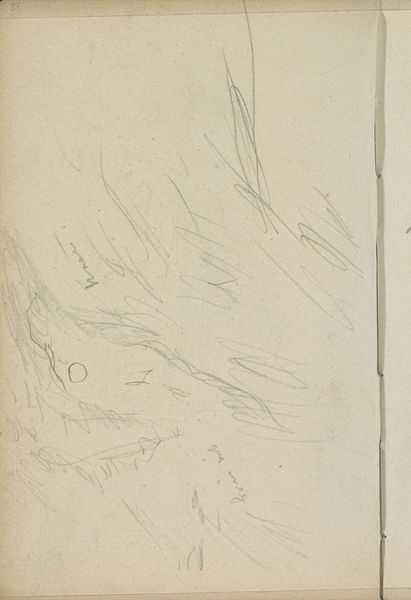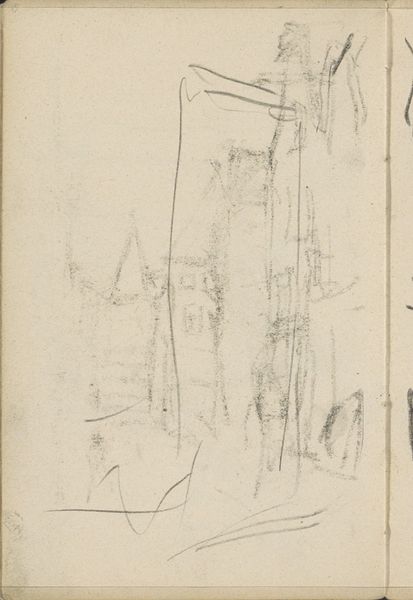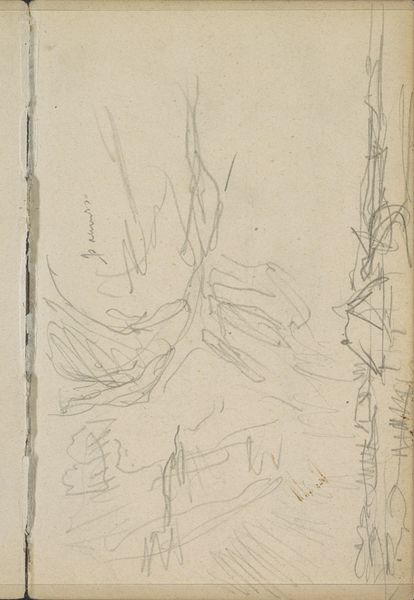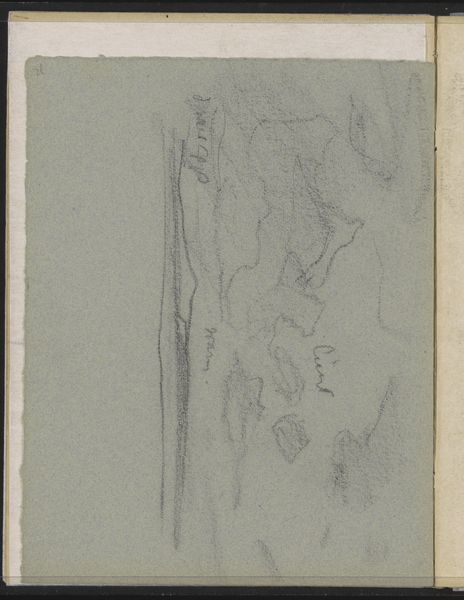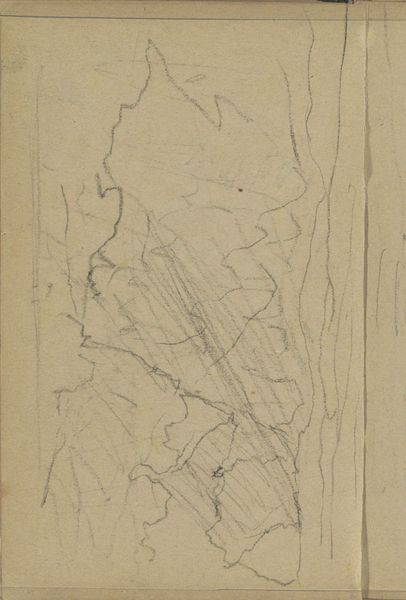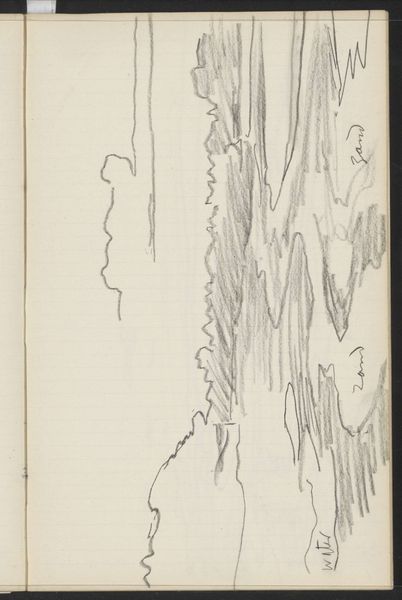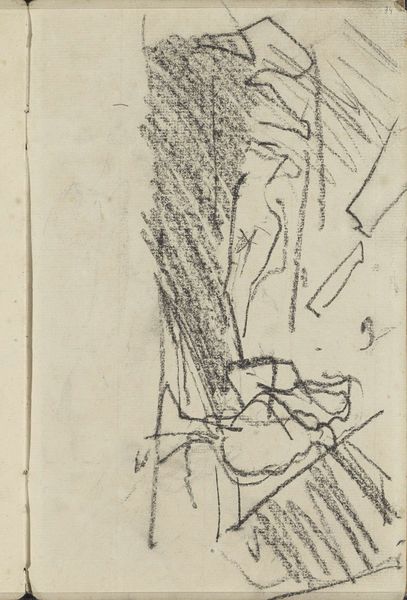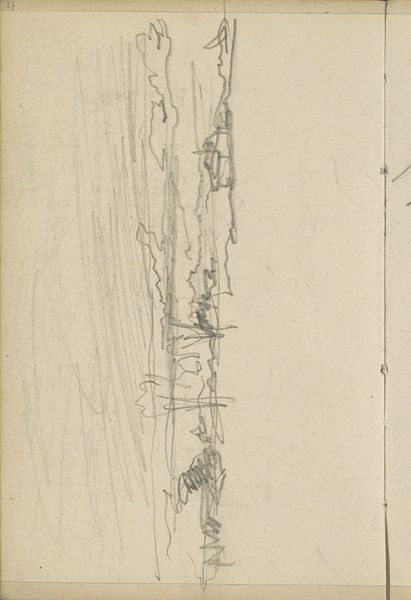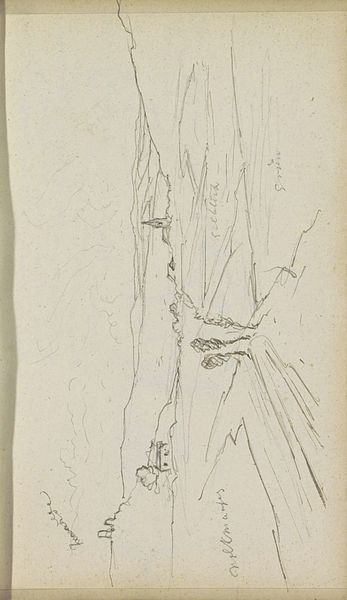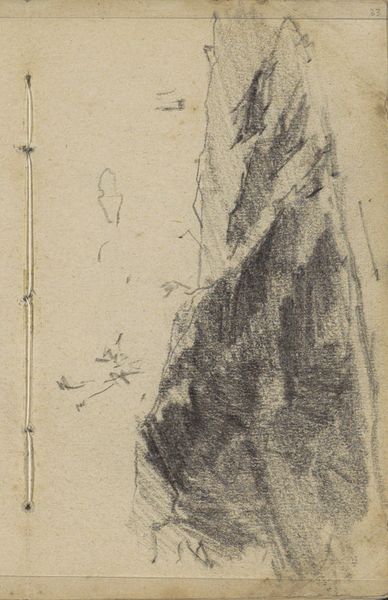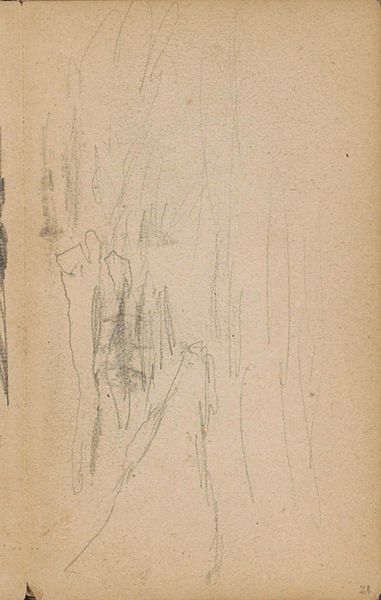
Copyright: Rijks Museum: Open Domain
Editor: This pencil drawing, titled "Wolkenlucht," was created around 1903 by George Hendrik Breitner, and it's currently housed in the Rijksmuseum. I'm really drawn to the raw energy of the marks. They seem so immediate and unrefined. What can you tell me about it? Curator: Looking at "Wolkenlucht," I’m struck by how it disrupts traditional notions of finish and artistic labor. This isn’t a polished oil painting, meant to deceive the eye. Instead, it’s a rapid, almost frantic sketch executed with a readily available and relatively inexpensive material: pencil on paper. Consider what that implies about the accessibility of artmaking in Breitner's time. It becomes less about elite training, more about a readily available commodity in line with materialist values. Editor: So you're suggesting that the medium itself democratizes the artistic process? Curator: Precisely. The disposability of paper and the ease of using pencil contrasts sharply with the time-consuming and costly processes associated with academic painting. Think about who could access those materials. Pencil sketches could be mass-produced and traded – offering an alternative to exclusive art markets, hinting towards shifts in social class and patronage, challenging hierarchies based on wealth and access. Editor: I see what you mean! I hadn’t really thought about the impact of materials in that way. The choice seems less aesthetic and more, well, political. Curator: It pushes us to examine the underlying economic and social structures that shape artistic production, as opposed to purely visual qualities. The pencil allows Breitner to quickly capture transient moments and shifting cloudscapes, reflecting a modern industrial society prioritizing speed and mass production. Consider that against older, long-duration artistic activities. Editor: So, appreciating the rough and ready qualities means recognising Breitner as working inside new commercial systems? That gives me a lot to think about, especially regarding what materials mean in contemporary art now! Curator: Exactly. Seeing it through a materialist lens opens up a completely new way to engage with and critique this, and any other work of art.
Comments
No comments
Be the first to comment and join the conversation on the ultimate creative platform.
